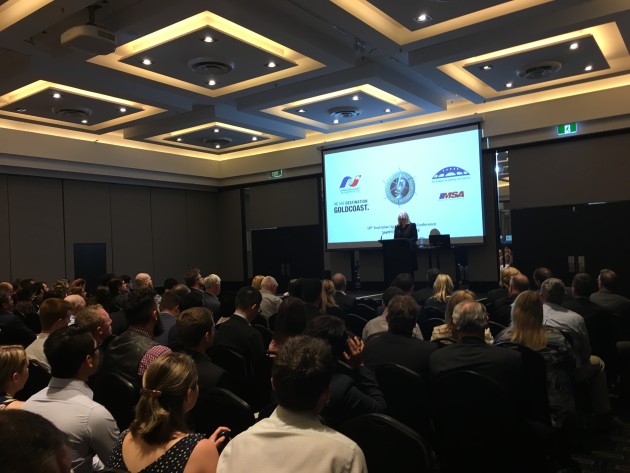The 18th Australian Space Research Conference was held on the Gold Coast this week, the first following the launch of the Australian Space Agency.
The conference showcased the cutting-edge research of scientists and the big dreams of space entrepreneurs as the sector heats up in Australia.
Proceedings were opened by Minister for Industry, Science and Technology Karen Andrews, who launched the CSIRO’s Space: A Roadmap for unlocking future growth opportunities for Australia report in her opening speech.
The report outlines a growth strategy for Australia’s space economy and calls for local industry to participate in international efforts towards a long-term human presence on the Moon.
Minister Andrews was followed by Australian Space Agency head Dr Megan Clark.
“We have some real opportunities, and we’re not limited,” Dr Clark said. “With a little bit of nurturing, with a little bit of support, we can run through the legs of giants and take those technologies further. We want Australians to see their technologies in space.”
David Lingard from DST Space Science and Technology Strategy then took the stage to outline Defence’s priorities for space capabilities.
“Priority capabilities include comprehensive situational awareness, communications for a networked force, accurate knowledge of position and time for precision effects,” Lingard said.
“Through the Buccaneer program, we’ve put a high frequency receiver into space to improve the calibration of JORN and experiment in space situational awareness alongside UNSW.
“This is about risk mitigation and testing key technologies. It’s also about maturing technologies that are relevant to Defence.”
Professor Russell Boyce from UNSW Canberra Space highlighted how the university is cooperating with Defence to improve the ADF’s ability to respond to the increasing rate of disruption in technologies.
“Australia needs to respond quickly to the waves of disruption that keep coming. Sector after sector globally are being disrupted, and it’s happening faster and faster,” Professor Boyce said.
“We showed RAAF that it is possible to develop a world-class satellite system and be ready for launch in 12 months.”
Another central theme to the conference was the need for medical studies into human health in space as part of preparations towards manned missions to the Moon and Mars.
Dr Natalie Rens of Spaceport AI outlined how her company is creating technologies that will support the health of astronauts living and working on another planet.
“If we want to go to Mars, the communication lag is 20 to 24 minutes. That removes any possibility of mission control stepping in and taking control if things go wrong,” Dr Rens said.
“We’re looking at developing technology that can give a real-time sense of astronaut health and even predict health ahead of time.”
There was some debate about whether the strategic focus should be on landing humans on the Moon once again, or heading straight to Mars. Proponents for another Moon landing argue that it could serve as a practice run for a Mars colony. However, Dr Jon Clarke, President of the Mars Society Australia, argued that it is not that simple.
“I’m all for going to the Moon. It’s the size of Africa, and we’ve only been to six places on it. But it could also be a black hole of effort. It is a different environment.”
One of the major differences between the Moon and Mars is the presence of levitating dust. This is a major issue facing a human presence on the Moon, but is less an issue on Mars thanks to the planet’s stronger gravity.

Professor Brian O’Brien, a WA scientist who once taught Buzz Aldrin as part of his role in the Apollo missions, expanded on the issue.
“The dust is everywhere. It is chemically unstable and reactive. It is one of the biggest medical and psychological barriers facing humans on the moon,” Professor O’Brien said.
“The Chinese rover on the moon lasted one lunar day and hasn’t moved since. Dust levitated, increased the frictional effect of everything it stuck to, and it stuck to everything.”
For this reason, Dr Clarke believes both missions should happen at the same time.
“[A Moon mission] should happen in parallel to other missions, to the benefit of both. There’s a lot we can learn, but there’s also a lot of areas where it could be misleading.”
Ultimately, all agreed that Australia has significant advantages in the sector that mean the growing domestic space economy will likely play a leading role in endeavours to come.
In fact, it already has. Professor O’Brien, who was there at the beginning, said it best.
“We’re not just country bumpkins with large dishes stuck willy-nilly on this big slab of land we’ve got!” he exclaimed. “We’ve put stuff on the Moon that changed the game internationally, and we can change the game again.
“I’ll leave you with that.”


